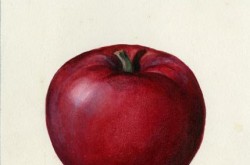Curtiss JN-4 Aircraft
This article was originally written and submitted as part of a Canada 150 Project, the Innovation Storybook, to crowdsource stories of Canadian innovation with partners across Canada. The content has since been migrated to Ingenium’s Channel, a digital hub featuring curated content related to science, technology and innovation.
The Curtiss JN-4 “Canuck” first earned its reputation as a trainer aircraft during the First World War and later won praise as a jack-of-all trades in postwar aviation. The two-seater Canuck was an improved version of an earlier design and was closely related to the American-made Curtiss JN-4 Jenny. Taking its first flight in 1917, the Canuck — known for its stability — became the standard flight trainer for the British and American air forces during the war. Many Canadians, who later served in the Royal Flying Corps and the Royal Air Force, learned to fly on a Canuck at British flying schools based in Canada. Canadian Aeroplanes Ltd of Toronto built more than 1,200 JN-4 “Canucks,” making it the first mass-produced airplane in Canada. Tough and versatile, the Canuck was the first airplane to cross Canada’s Rockies, and the first to deliver airmail in Canada. It was also used to test cold-weather flying, and the use of skis as landing gear. After the war, the Canuck became a favourite of barnstorming pilots who showcased the aircraft’s manoeuvrability in public aerial demonstrations.
The JN-4 “Jenny” was built in the United States by the Curtiss Aeroplane and Motor Company, whose founder Glenn Curtiss belonged to Alexander Graham Bell’s Aerial Experiment Association.




















![A block of photographs showing some of the people involved in the bombing of beluga whales in the estuary and gulf of the St. Lawrence River. Anon., “La chasse aux marsouins [sic]. » Le Devoir, 15 August 1929, 6.](/sites/default/files/styles/thumbnail_7/public/2024-09/Le%20Devoir%2015%20aout%201929%20page%206.jpg?h=584f1d27&itok=TppdLItg)






